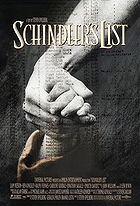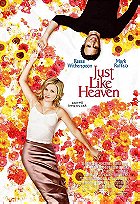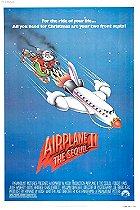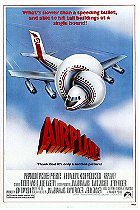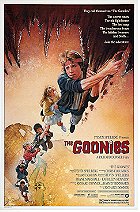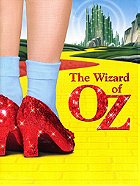Max: "Would you believe Chuck Norris with a BB gun?"
Get Smart is the latest Hollywood endeavour to remake a classic TV series for the big screen. In recent years films like The Dukes of Hazzard and Wild Wild West have proved to be complete tripe, with others of its type to follow. I'm certain that many of us hold nostalgic memories of watching the occasional episode of the original Get Smart. Personally, Buck Henry and Mel Brooks' Get Smart was an influential TV event during my childhood, and (like everyone else) I was sceptical when I heard that the film reinvention was in the works. With the mistreatment of other classic television shows over the years, one cannot dispute that things didn't look promising. I especially remember mourning the death of Don Adams who played the illustrious title role many decades ago.
The filmmaking team in general was subject to abject criticism and scepticism: after all, the original show is outstanding and its style of spy spoof has subsequently never been matched. It's interesting to note that the film entered production at the beginning of 2007, eying a mid-2008 release. The first trailer was released roughly 13 months prior to the film's release...allowing 13 long months of internet chatter and uncertainty regarding the final product. No-one expected Get Smart to be this good.
Several advanced screenings were apparently conducted in the months leading up to the film's release, and the general vibe was that the film is a complete disaster. Essentially, I assumed that the film would have a few laughs but would be quite average...I couldn't have been more incorrect! Get Smart has taken audiences completely by surprise. In a summer season of wholly overhyped blockbusters, this is a breath of fresh air. So what's the massive appeal? A plentiful supply of quality laughs dominating the running time, some exhilarating action (that's also humorous at the same time), fine filmmaking, a solid script and an equally satisfying score running throughout the film.
Get Smart opens in a contemporary setting: CONTROL is secretly operating despite being apparently disbanded after the cold war, and KAOS has been supposedly defeated. Maxwell Smart (Carell) is a dedicated analyst for CONTROL who has his heart set on being promoted to a field agent. However, Max's skill as an analyst proves to be an obstacle and the Chief (Arkin) feels he is more valuable in his current position. Max specialises in deciphering recorded conversations at which he is excellent. After all, he seems to be the only one capable of interpreting the meaning behind a conversation during which enemy agents discuss eating muffins. Trouble strikes when KAOS penetrates CONTROL headquarters and steals the identities of the current field agents. Hence, the field agents have all been compromised. Thankfully for Max, the Chief has no choice but to let him reach his desired rank of field agent. Max is partnered with the competent Agent 99 (Hathaway) to thwart the latest plans of KAOS. Admirably, the screenwriters stay away from inserting a high number of unnecessary sub-plots that ultimately water down the jokes and amusement. The script is extremely tight without any fluff to divert our attention away from the central plot. Admittedly there are a few unnecessary things included just for laughs: the difference is that there's no overkill in this department.
After all the hype concerning this film, the ultimate question is how does Steve Carell hold up as Maxwell Smart? In my opinion the actor succeeds with flying colours. His deadpan delivery and complete adherence to the screenplay transcends whatever stupidity Max experiences, allowing the audience to realise that the character isn't deliberately attempting to be funny. Films featuring Adam Sandler and Jim Carrey grow monotonous because all they do is overact and try to be funny. Carell has a talent of delivering hilarious material while making it seem like it's in the context of the situation. No other field agent would reach for a snack while spying on enemy suspects. In effect, this fact makes Steve Carell the best "name" actor to tackle the role previously made memorable by Don Adams. Carell never tries to mimic Adams' interpretation of the character: instead he presents something original, while still being the classic Maxwell Smart we all know and love. Also, the film embodies a different form of comedy: they have resurrected the original humour used in the original Get Smart. Granted, bottom jokes and a few childish remarks do appear as well as perhaps some superfluous political jokes. Not all of the jokes work well, but there are certainly enough to keep us entertained.
Anne Hathaway has strong chemistry with Steve Carell. Hathaway portrays a beautiful, competent heroine with a feisty attitude. Alan Arkin receives a lot of screentime as the Chief of CONTROL. He cannot match the actor from the original show (of course), but he presents a good interpretation of the character. Also in the cast we have Terence Stamp playing a trademark villain, Dwayne "The Rock" Johnson as a proficient field agent, and even actors like Ken Davitian, James Caan and David Koechner thrown into the mix. A special mention for Bill Murray who portrays the forever memorable Agent 13: Murray is underused but tremendously amusing! His cameo is one of the film's highlights.
Get Smart has been created by a commendable creative team. The film's concluding action scene contains some exciting action, amazing special effects and a great team of stuntmen. However, this film is not without flaws. First of all, the film plods enormously during the middle section. A lot of characters are neglected with the obvious exception of Max and 99. This mid-section could have benefitted with heavy trimming. Also, the character of Agent 99 is poorly developed. She comes off as more of a serious mother figure that never smiles. Maybe I'm comparing this too severely to the original TV show, but Max is not entirely fitting when he's intelligent. I miss the incompetent Max who made frequent mistakes that created hilarious consequences. Of course, Carell's interpretation of the character is vastly different, but Max just isn't as good with higher intelligence.
Overall, Get Smart is not the disaster that we were all expecting. It has the classic gadgets (shoe phone, cone of silence, etc), the classic lines and even the classic characters. The amalgamation of comedy and action is a difficult task, and the filmmakers have proved able to accomplish such a daunting feat. There's a healthy dosage of action with witty laughs and an intriguing plot to boot. The film does not provide a terribly deep experience; however it achieves its goal to make the audience laugh. This is a fun little comedy flick clean enough to entertain the whole family.
7.2/10
 Login
Login
 Home
Home 183 Lists
183 Lists 1670 Reviews
1670 Reviews Collections
Collections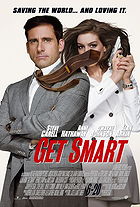
 0 comments,
0 comments, 


